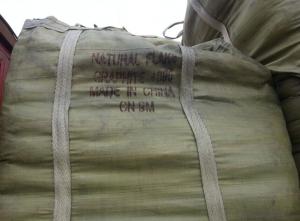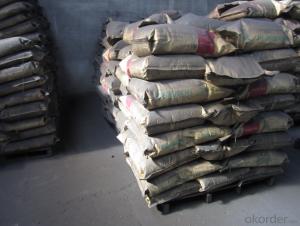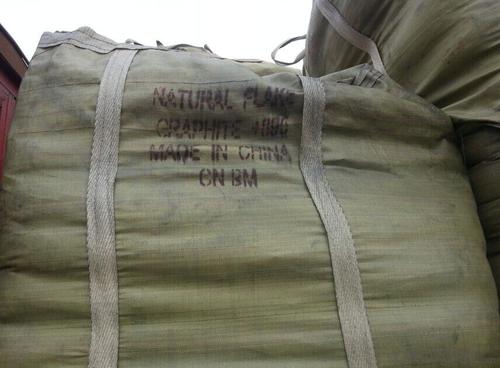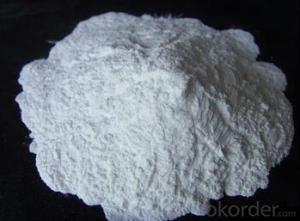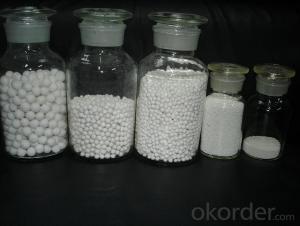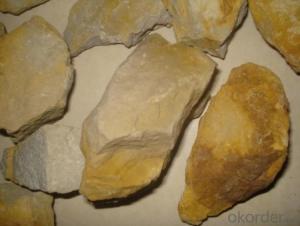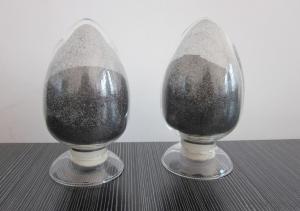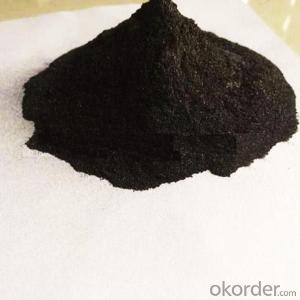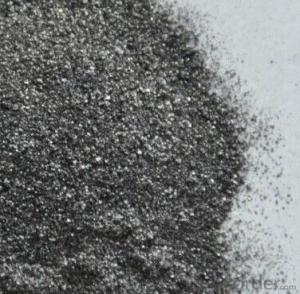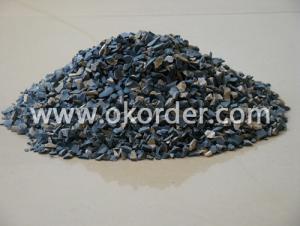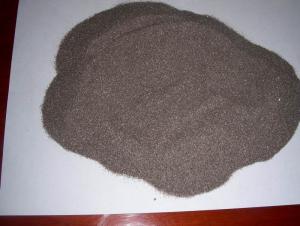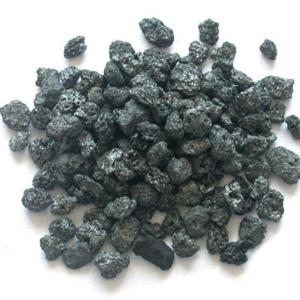Raw Materials for Refractory:NFG Natural Flake Graphite with Good Price
- Loading Port:
- Tianjin
- Payment Terms:
- TT OR LC
- Min Order Qty:
- 0 m.t.
- Supply Capability:
- 20000 m.t./month
OKorder Service Pledge
OKorder Financial Service
You Might Also Like
Application of Natural Flake Graphite
1.Used as release agent lubricant in the production of chemical industrial catalyzer.
2.Used as high temperature resistance lubricant base material,erosion resistance lubricant base material.
3.Used as powder metallurgy release agent and metal alloy material.
4.Suitable for making graphite refractory bricks.
Product Description of Natural Flake Graphite
1.Types:High-purity graphite,high carbon grahite.
2. Specifications:The particle size ranges from (325mesh-35mesh),
and the carbon content ranges from85 to 99.9%.
PROPERTIES | CNBM-NFG1 | CNBM-NFG2 | CNBM-NFG3 |
Medium Carbon | High Carbon | High Pure | |
Carbon | 85-95% | 96%-99% | 99.9% |
Mesh | 45 μm-500 μm (325mesh-35mesh) | ||
V.M. | ≤4% | ||
Moisture | ≤0.5% | ||
Color | Black Shiny, | ||
Appearance | Flake | ||
Packaging & Shipping of Natural Flake Graphite
Packaging: 1.25MT jumbo bags or 1MT jumbo bags
Delivery details: according to customers’ requirements
Application of Natural Flake Graphite
1.Used as release agent lubricant in the production of chemical industrial catalyzer.
2.Used as high temperature resistance lubricant base material,erosion resistance lubricant base material.
3.Used as powder metallurgy release agent and metal alloy material.
4.Suitable for making graphite refractory bricks.
Pictures
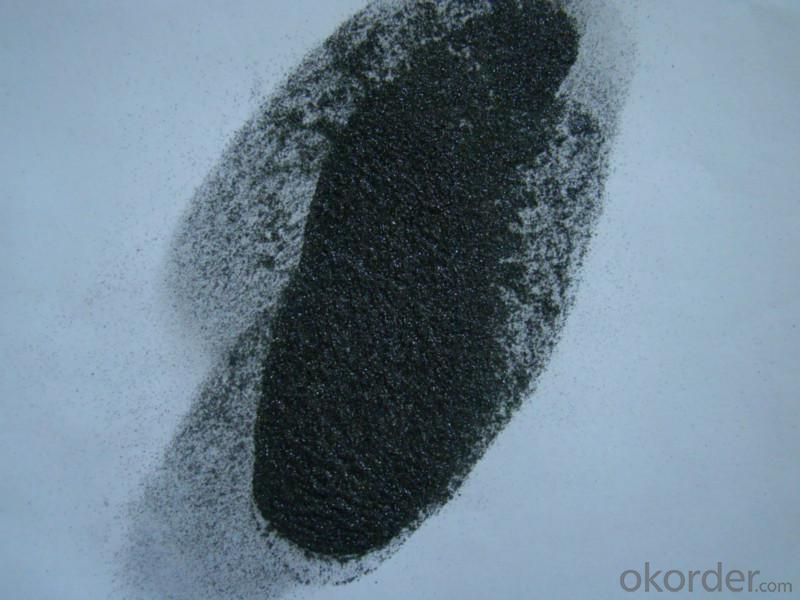
- Q: What is refractory brick?
- Capability1. Refractory brick is also known as firebrick. It is faint?yellow or brownish. Refractory brick with 770 ℃ at high temperatures is called for short firebrick. It is mainly used for building and smelting furnace. It is a refractory material made by fring refractory clay or other refractory material.
- Q: How much modulus is used as refractories material of sodium silicate.
- Storage and use are very convenient, especially for mechanized and the evenly refractory material and the sodium silicatemodulus is generally...2. transportation. The appearance of product is pure white. Instant powdered sodium silicate, also known as instant sodium metasilicate.4 to 3, in powder form, automation. in the range of 3, hydrated sodium silicate
- Q: How to distinguish the fire resistant level of the rubber and plastic thermal insulation material?
- It is divided into level A, B1, B2 and B3. According to the current "burning behavior of building materials classification method", Level A insulation material is a non-combustible material, which belongs to YT. However, from the point of view of the current market , level A insulation material are very few, only glass wool, rock wool board, foam glass and vitrified micro bead. However, compared with level A insulation material, the more welcomed by the market is the organic insulation material. This is characterized as thermal insulation material, which is divided into three levels: level B1 is flame retardant, level B2 is flammable and level B3 is flammable. The level B1 nonflammable thermal insulation material is determined according to the fire endurance of the material. And different parts of the material are divided differently! Such as the common EPS / XPS insulation boards through special treatment of adding flame retardant. . Level B2 combustible insulation material is commonly the EPS expanded polystyrene foam insulation board and XPS board, that is, the ordinary plate. This material has low ignition point, and releases large amounts of harmful gases in the combustion process . Level B3 flammable insulation material is commonly the thermal insulation material taking polystyrene foam as the main material. Since this material is highly flammable, it has been out of the external wall thermal insulation materials. As for the civil construction insulation materials, China's current popular building insulation materials in the market are mainly made of three organic foams: EPS (molded polystyrene board), XPS (extruded polystyrene board) and PU (polyurethane).
- Q: In entering fire door, which material does well?
- Cold rolled steel, or after a flame retardant willow eucalyptus wood, filled up with perlite inside! Fireproof heat insulation. Price is between 300-900, depending on what technology it uses! Company's large-area substrate door (paint) is cheap door, in commonly 350. Followed is without lacquer, which has a layer of decorative materials, generally between 380-500. Finally there is high-grade, which price is around $900. 0...
- Q: What kind of materials can be tested their electrical resistivity in the current refractory industry?
- fused cast bricks, fused zirconia corundum blocks, corundum, high zirconium
- Q: What is fireproofing material? Are fireproof materials the same thing with thermal insulation materials and refractories?
- Insulation materials. Thermal insulation material is characterized by thermal insulation, which is one of the four traditional inorganic nonmetallic materials. Fire?retardant material is cahracterized by heat-resistant. Refractory is a kind of materials of resisit high temperature. Fireproof material, which is different from thermal insulation material and refractory, is a synthetic material with some fireproof subtrate added. It is essentially resistant to high temperature.
- Q: Why do magnesium oxide refractory bricks can be made into refractories?
- Because the magnesium oxide, commonly known as magnesia, which is a basic oxide, with the common property of alkali oxides and belongs to the cementitious material . It is white or light yellow powder, odorless, tasteless, non-toxic and a typical of alkaline earth metal oxide, whose chemical formula is MgO. It is white powder, with melting point of 2852 ℃, boiling point of 3600 ℃ and relative density of 3.58 (25 ℃). The magnesium oxide that is soluble in acid and ammonium hydroxide solution has high insulation properity. After high temperature of above 1000 ℃ burning, it will transform into crystals, and when rising above 1500 ℃ , it will turn into dead-burned magnesium oxide (also known as the magnesia) or sintered magnesia. So the performance of magnesium oxide refractory bricks is good, and the fire resistance of it is very strong.
- Q: What are the specific steps of stirring the steel ladle castable?
- Steps are as follows. 1 Compulsory mixer is used to stir the castable and bags, rope and other debris can not mix in the castable when stirred. 2, Castable should be unpacked on the scene. Stirred volume depends on the capacity of the mixer. Castable should be accurately measured and put into a blender. 3 The process of first dry mixing and then wet mixing is adopted. After the castable is added to the mixer, it is dryly mixed for 2 minutes, add about 5.2 to 5.5 percent of water and continue to add water while stirring. Water that is 80% of the total should be added, and then decide whether to continue to add or not depending on the consistence (noting that the water must be clean water and sewage can not be used). Then it is wetly mixed for 4 minutes and stirred for not less than 6 minutes at one time, until castable is even. In general, the bottom is slightly dry and the wall of the ladle is slightly dilute (the amount of water is only for reference). 4, The amount of water and mixing time should be controlled strictly when stirred to ensure that the needs of the consistency are met. If castable is too thin, it will seriously affect the quality of the material. The stirred volume, stirring time and water that is added should be consistent and they can not suddenly be thick or suddenly be thin. If the consistency does not meet the requirements, the castable should be put back to the mixer and stirred with appropriate water or dry materials. 5, It should be stirred evenly and casting should finish in 20 minutes, in order to avoid sclerosis, affecting structural strength of ladle lining 6, After each completion of construction, varieties of castable should be changed and the mixer should be cleaned 7, Stirring can stop in halfway. If the mixer breaks down and it can be repaired in a short time, some of the materials have to be removed before the machine is opened. If the machine can be repaired on time, castable refractory should all be removed.
- Q: what's the materials of fireproof?housing?
- what's the materials of fireproof?housing? what's the fire?rating? how much is it? What are the key installation points?
- Q: What's the fire endurance of A grade fireproof glass curtain wall?
- An hour and a half, an hour, and half an hour. As a key step in the home fire prevention, fire door is particularly important. According to the fire endurance and heat insulation performance, it can be classified as follows: A class fire door with fire endurance of no less than 1.5h; B class fire door with fire endurance of no less than 1h; C class fire door with fire endurance of no less than 0.5h. We can choose according to different needs, while A class fire door and B class fire door are now commonly used. Fire door has great varieties, and the material it uses is also of wide range. It includes stainless steel fire doors, glass fire doors, steel fire doors, etc. The most important feature of fire door is its fire resistance period. The main difference between A class fire door and B class fire door lies in their fire endurance, of which the former is no less than 1.5h, while the latter is no less than 1h. Difference between A class fire door and B class fire door also lies in their fireproofing material. That is the thickness of the built-in fire prevention board, of which A class fire door is 52mm, while B class fire door is 46mm. Therefore A class fire door obtains longer fire resistance period than that of B class fire door and gains better fireproof performance. A class fire door and B class fire door also differ in the places they are used. A class fire door is generally used in important fire fighting access of machine rooms, warehouses and oil depots, etc. and flammable and explosive public places, while B class fire door is generally used in the ordinary fire fighting access of some ordinary buildings. But B class fire door is more widely used than A class fire door.
Send your message to us
Raw Materials for Refractory:NFG Natural Flake Graphite with Good Price
- Loading Port:
- Tianjin
- Payment Terms:
- TT OR LC
- Min Order Qty:
- 0 m.t.
- Supply Capability:
- 20000 m.t./month
OKorder Service Pledge
OKorder Financial Service
Similar products
Hot products
Hot Searches
Related keywords
